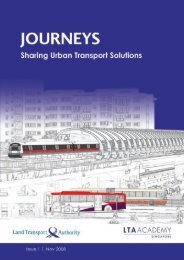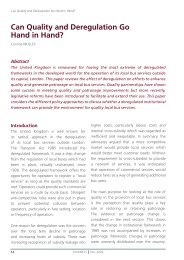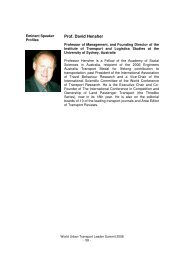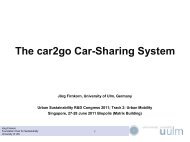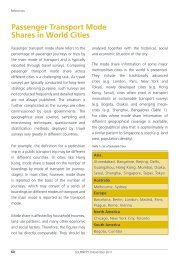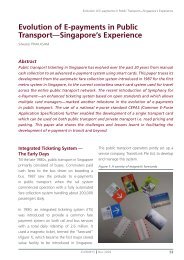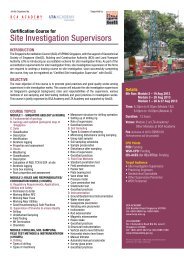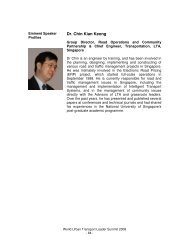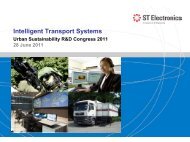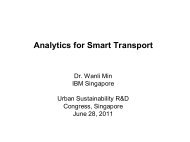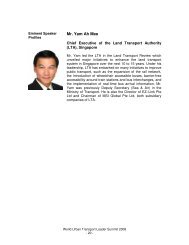Full Version - Issue 7 | November 2011 - LTA Academy
Full Version - Issue 7 | November 2011 - LTA Academy
Full Version - Issue 7 | November 2011 - LTA Academy
You also want an ePaper? Increase the reach of your titles
YUMPU automatically turns print PDFs into web optimized ePapers that Google loves.
Urban Sustainability and Transportation: Research Framework for Medium and Long Term Transport Planning<br />
social network with the network of links<br />
and preferences to particular places and<br />
brands. Most work so far has centred the<br />
social networks on the contacts, which are<br />
relevant for joint leisure, but has omitted<br />
the fact that people also have attachments<br />
to particular places and firms.<br />
The survey will be conducted as an egocentric<br />
survey of contacts with whom the<br />
respondents spend their leisure time and<br />
fulfil the priority of obtaining a general<br />
and broad understanding of the network<br />
geographies. Special care will be taken to<br />
involve both citizens and foreign residents<br />
to get as complete an overview as possible.<br />
The survey will give insights, as discussed<br />
above, in the number and geography of<br />
social networks of the Singapore residents<br />
and of the frequency of their interactions.<br />
The uses of ‘clique’, an item tested in<br />
the current work at ETH Zurich (Kowald<br />
and Axhausen 2010), will allow us to<br />
characterise the internal structure of the<br />
Figure 5: Residential locations of the respondents (Zurich only)<br />
and acquaintances, as reported in Frei and Axhausen (<strong>2011</strong>b)<br />
JOURNEYS | <strong>November</strong> <strong>2011</strong><br />
networks in a first approximation. The<br />
information about the place and<br />
firm attachments complements the social<br />
geography. Information about the mobility<br />
biography will place the current situation<br />
into the biographical context of the<br />
respondents.<br />
Implication Of Social Network<br />
On Location Choice<br />
The survey results will allow to do two<br />
things, firstly, generalise the social networks<br />
to the population as a whole (Arentze and<br />
Timmermans 2006), (Hackney and Marchal<br />
2008), (Frei and Axhausen <strong>2011</strong>b), (Arentze,<br />
Kowald and Axhausen <strong>2011</strong>) by linking the<br />
agents via a probabilistic model, and secondly,<br />
establish new model structures to capture joint<br />
decision-making in destination choice (Frei and<br />
Axhausen <strong>2011</strong>a).<br />
Based on the substantial literature on joint<br />
household decision-making in transport<br />
(Zhang et al. 2007) and on-going work within<br />
the SustainCity project (SustainCity <strong>2011</strong>),<br />
suitable model structures will be developed<br />
to capture the joint choice of locations within<br />
social networks, in particular, for leisure<br />
The survey will be conducted as an<br />
ego-centric survey of contacts with<br />
whom the respondents spend their<br />
leisure time and fulfil the priority<br />
of obtaining a general and broad<br />
understanding of the network<br />
geographies. Special care will be<br />
taken to involve both citizens and<br />
foreign residents to get as complete<br />
an overview as possible.<br />
15



